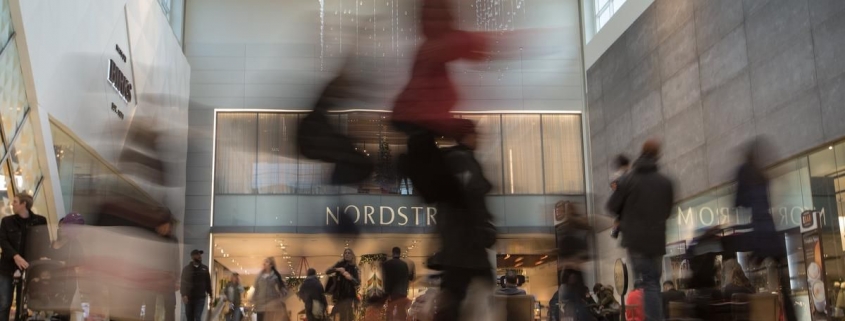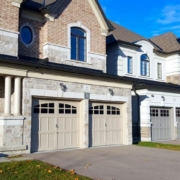At a time when they were already suffering from Target’s failed Canadian expansion and the seemingly unstoppable growth of online shopping, the loss of the once-mighty Sears chain felt like yet another body blow for shopping malls in this country.
After all, the departure of an iconic brand — and its large stores in prime spots — would surely mean fewer customers wandering the malls and less money being spent.
But a year after the last Sears stores in Canada were finally shuttered, the picture is a lot less grim than anyone expected – and the future’s looking comparatively sparkly.
“The apocalypse hasn’t happened,” said Diane Brisebois, president of the Retail Council of Canada (RCC), which recently released a study of the 30 biggest malls in the country.
While the loss of Sears hit the bottom line of mall owners, the country’s biggest malls are still a hive of activity, with all but a handful seeing sales rise in 2018, compared to 2017.
Experts point to a variety of reasons, including that Sears had already been drifting away for a few years anyway – selling leases back to mall owners a handful at a time and simply not renewing others. At Yorkdale, which topped the RCC’s rankings with sales of $1,905 per square foot in 2018 (a 15 per cent rise from $1,653 in 2017), Sears left in 2014, after being bought out of its lease by mall owner Oxford Properties.
Other reasons the departure didn’t hit particularly hard? The mall business model has been evolving, and, well, Sears really hadn’t been a big draw in years anyway.
“The Sears store could have been in a parking lot by itself somewhere, and it would have drawn as much foot traffic for the mall,” said Queen’s University real estate professor John Andrew. “Especially over the last few years, the type of customers they were attracting weren’t people who’d be spending the day shopping. You’d be at home and say ‘Oh geez, my washing machine just died.’ Then you’d pull up outside Sears at the mall, pick it up, and walk back out again.”
The nature of malls is also changing, said Andrew, whether it’s the size of the stores, or even what people come to the mall to do.

“The whole model of a big anchor store at one end of the mall attracting people is breaking down,” said Andrew.
At Toronto’s Eaton Centre, Sears left in 2014. Its lease had been bought out, at least partly because big-box leases aren’t particularly lucrative anyway, said Sal Iacono, executive vice-president of operations for mall owner Cadillac Fairview.
“I’m not going to say Sears not being around is a good thing. But the kind of rents they were paying were not as large as you’d expect,” said Iacono. “Anchor leases by their nature are volume discounts.”
At the Eaton Centre, the gigantic Sears space was renovated into a few different spaces, with the biggest one occupied by high-end U.S. department store Nordstrom’s. Smaller spaces typically means higher rents per square foot. It also means more flexibility in the types and size of tenants who can be brought in, often including high-end boutiques, said Andrew.
As malls reconfigure their spaces, they’re also trying to find entirely new revenue streams. Think hotels, think fancy restaurants and more interesting food courts. And think homes.
“There’s a tremendous potential for office space, for condo space, for apartments,” said Andrew.
The sky, quite literally, is the limit.
“Shopping centres realized they had a lot of airspace they weren’t using,” said the retail council’s Brisebois.
Cadillac Fairview already has approval to add 2,000 residential units as part of a 27-acre development centred around its mall in Richmond, B.C., said Iacono. Just as in the retail world, a large part of living beside (or above) a mall — in Richmond or other potential spots — is location, location, location.
“If you think about where malls are, particularly urban ones, they tend to be located centrally, close to transit and closer to where people work,” Iacono noted.
The biggest challenges in building upwards, Iacono said, tend to be engineering ones, rather than philosophical or legal.
“In a retail space, you want as few pillars as possible, to maximize space. So you can’t just drop 50 storeys on top of a retail area. You’d need to add more support, and that means cutting down on retail space, which means less retail revenue. You do a cost-benefit analysis and figure out if it’s viable,” said Iacono. “Everything is possible at a certain cost.”
With those types of developments running tens or even hundreds of millions of dollars and taking years to plan, it’s no coincidence that the companies with the two biggest collections of malls in the country — Cadillac Fairview and Oxford — are controlled by pension companies (the Ontario Teachers’ Pension Plan and the Ontario Municipal Employees Retirement System respectively), said Andrew.
“They’ve got a much longer term perspective,” added Andrew. “If reconfiguring the space means retail suffers a bit for five years, but it means a better long-term future, they can do it. And they’ve got a lot of capital.”









 Maziar Moini, Broker of Record - Home Leader Realty Inc.
300 Richmond St. W., #300, Toronto, ON M5V-1X2
Maziar Moini, Broker of Record - Home Leader Realty Inc.
300 Richmond St. W., #300, Toronto, ON M5V-1X2


